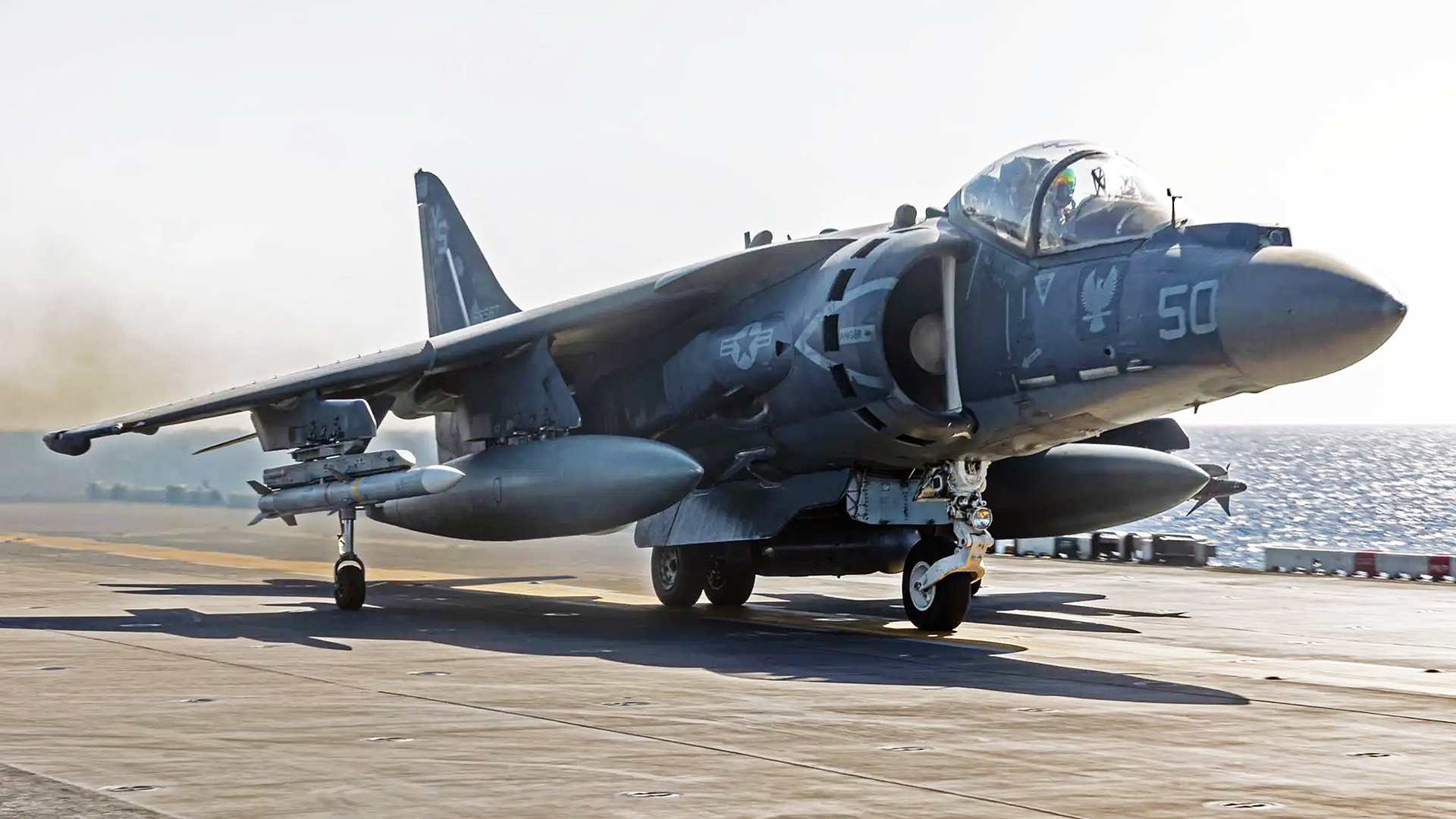The pilot of a U.S. Marine Corps AV-8B Harrier II has reportedly intercepted multiple Houthi drones during the militants’ sustained anti-shipping campaign that’s been focused on the Red Sea, along with barrages of drones sent to strike Israel. It isn’t clear how many, if any, of the drones Harriers have shot down. Until now, we had heard accounts of U.S. and allied warships bringing down Houthi drones and missiles, as well as aerial kills by U.S. Navy F/A-18 Super Hornets and undisclosed land-based fighter aircraft. The latest revelations also shine a light on the AV-8’s air-to-air capability, something that The War Zone has explored in the past.
Author’s note: See the update at the bottom of this story that describes changes made to our original report.
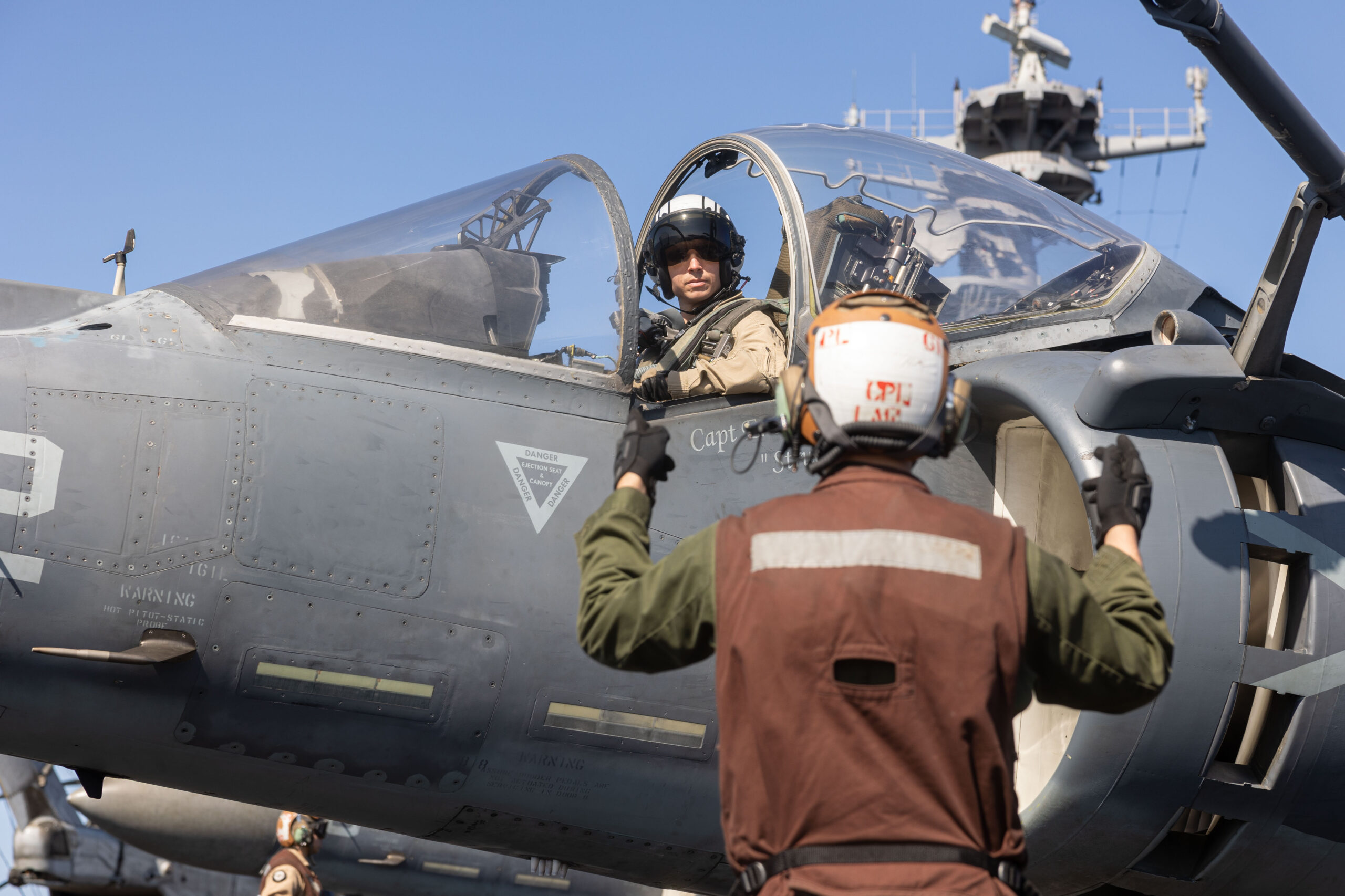
In an interview with the BBC, Marine Corps AV-8B pilot Capt. Earl Ehrhart said that he had intercepted seven Houthi drones; The War Zone is trying to definitively determine if any of those drones were also shot down by Ehrhart.
Ehrhart serves with Marine Attack Squadron 231 (VMA-231), the “Ace of Spades,” currently aboard the amphibious assault ship USS Bataan (LHD-5). Since late December, USS Bataan has been operating in the Mediterranean, but as of October, when the Houthi campaign began, in the wake of Israel’s war in Gaza, the warship was operating in the Red Sea and the Persian Gulf areas. It is not entirely clear where Ehrhart flew the missions in question.
“I never imagined I was going to be doing this when we launched,” Ehrhart told the BBC, reflecting that, as of early October, the squadron, part of the 26th Marine Expeditionary Unit (Special Operations Capable), was expecting to complete its latest deployment, which began last August.
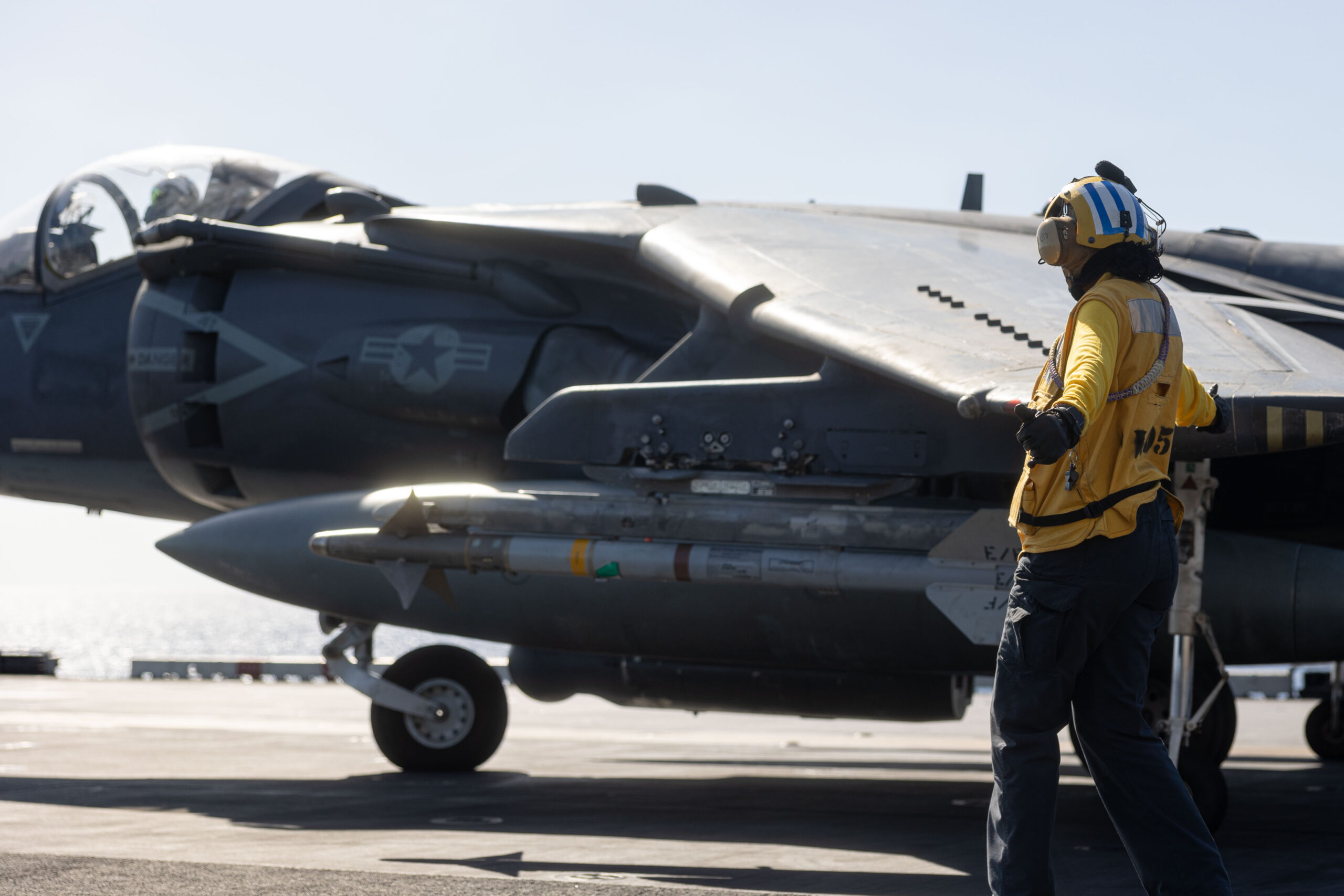
“The Houthis were launching a lot of suicide attack drones,” Ehrhart said, describing the Yemen-based militants as “a robust and capable force.”
Ehrhart’s account suggests that aerial combat against any kind of opposition was not necessarily expected by VMA-231.
“We took a Harrier jet and modified it for air defense,” Ehrhart added. “We loaded it up with missiles and that way were able to respond to their drone attacks.”
The types of missiles used were not revealed.

However, the Marine Corps AV-8B can be armed with examples of both the radar-guided AIM-120 Advanced Medium-Range Air-to-Air Missile (AMRAAM) and the heat-seeking AIM-9L/M Sidewinder. The aircraft can also be fitted with a GAU-12 25mm gun pod, which could potentially also be used in air-to-air engagements.
Photos released by the Pentagon of AV-8s aboard USS Bataan in recent months also confirm the aircraft are carrying LITENING targeting pods. These can also play an important role in the air-to-air realm, with the ability to slave the pod to the jet’s radar or other sensors for very long-range visual identification of targets, day or night. You can read more about this critical capability here.
However, the same BBC article indicates that at least some drone interceptions were carried out at a range close enough for their explosive payload to potentially damage the aircraft hunting them down.
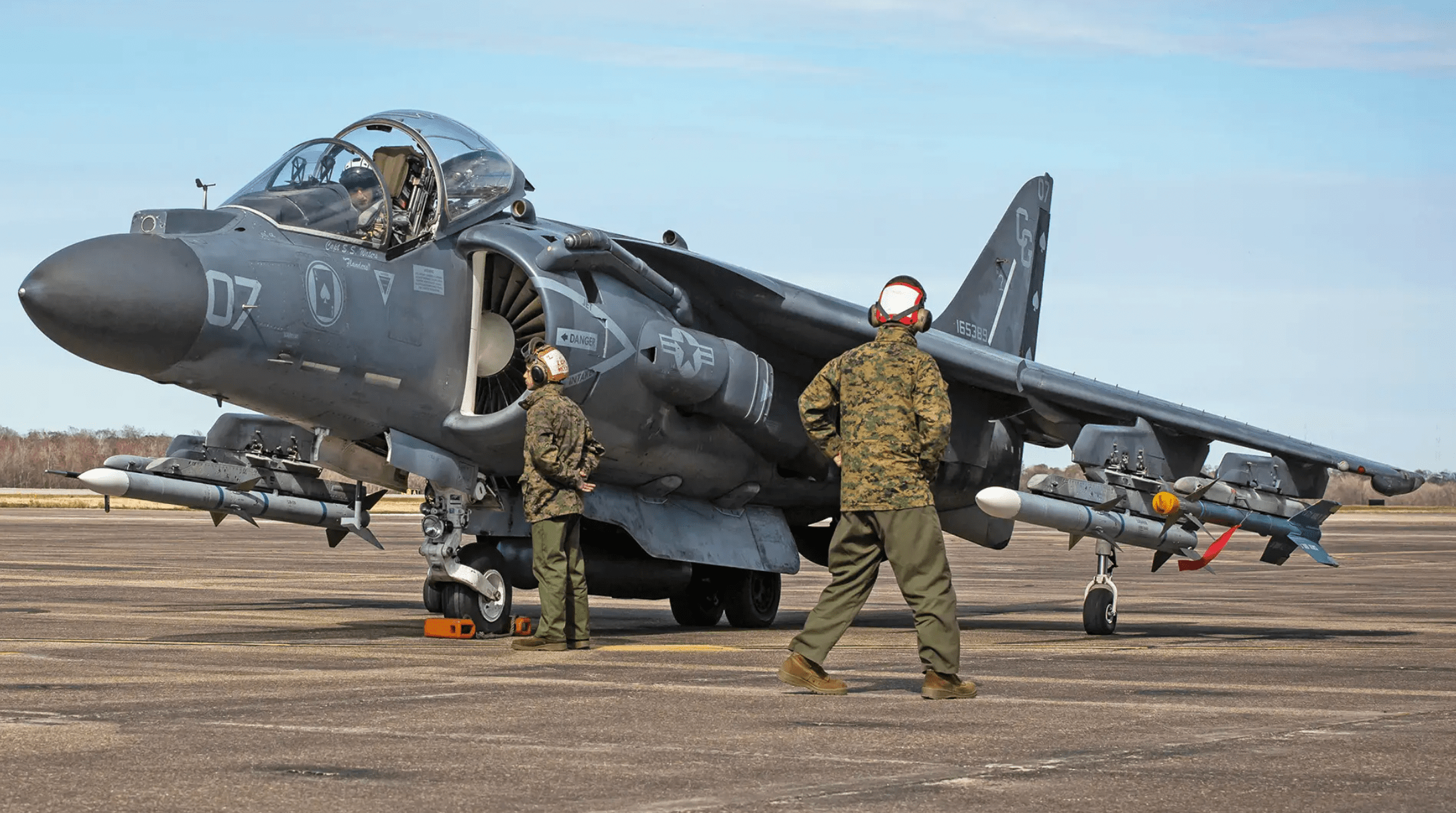
The risks involved in finding and shooting down much slower-flying drones are something that we have heard about before, including from the war in Ukraine, in which similar Iranian-designed one-way attack drones have been widely used.
A Ukrainian Air Force video from the cockpit of one of its MiG-29 Fulcrum fighters, as it successfully shoots down what’s said to be a Russian Orlan drone:

According to Ehrhart’s account, it seems that the USS Bataan held one or more AV-8s at high readiness to launch against incoming drone (and likely also anti-ship cruise missile) threats. Targeting information seems to have been provided primarily by a U.S. Navy destroyer in the region, using its Aegis combat system, which you can read all about here.
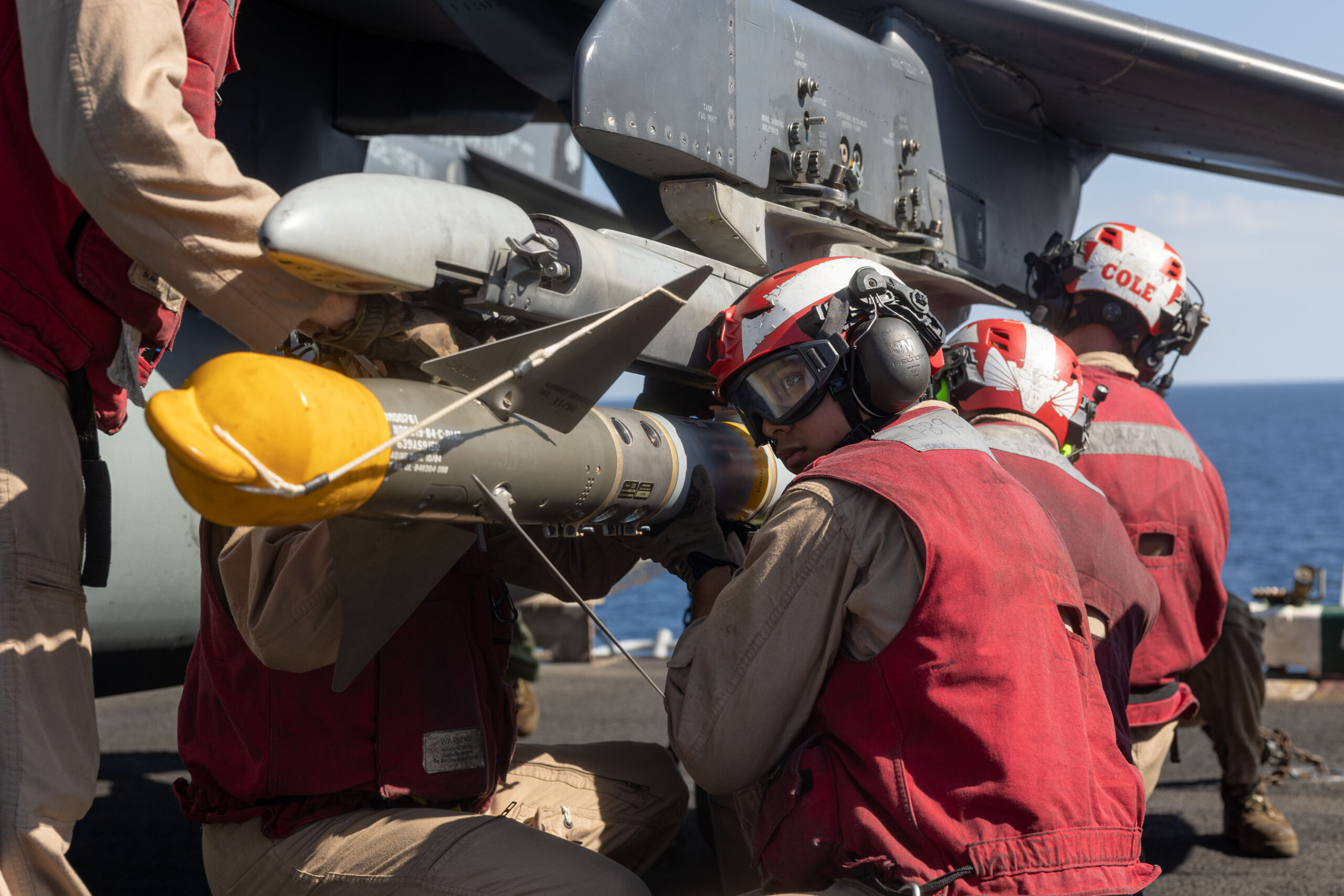
Ehrhart continued: “The command room will say: ‘The Houthis have launched a one-way attack drone. We have this amount of time.’ Then we can step down from a two-hour response time, all the way down to a five-minute response.”
While the apparent use of the AV-8 to counter Houthi drones would have been driven primarily by its availability in the region, it’s worth noting that the aircraft has a highly relevant, if often overlooked air-to-air capability.
In its radar-equipped AV-8B+ form, the aircraft uses the AN/APG-65 radar that was ported over second-hand from F/A-18A/B Hornets. Since then, it’s been subject to some upgrades and, combined with AMRAAM, provides a robust beyond-visual-range air-to-air capability as part of its multirole repertoire.
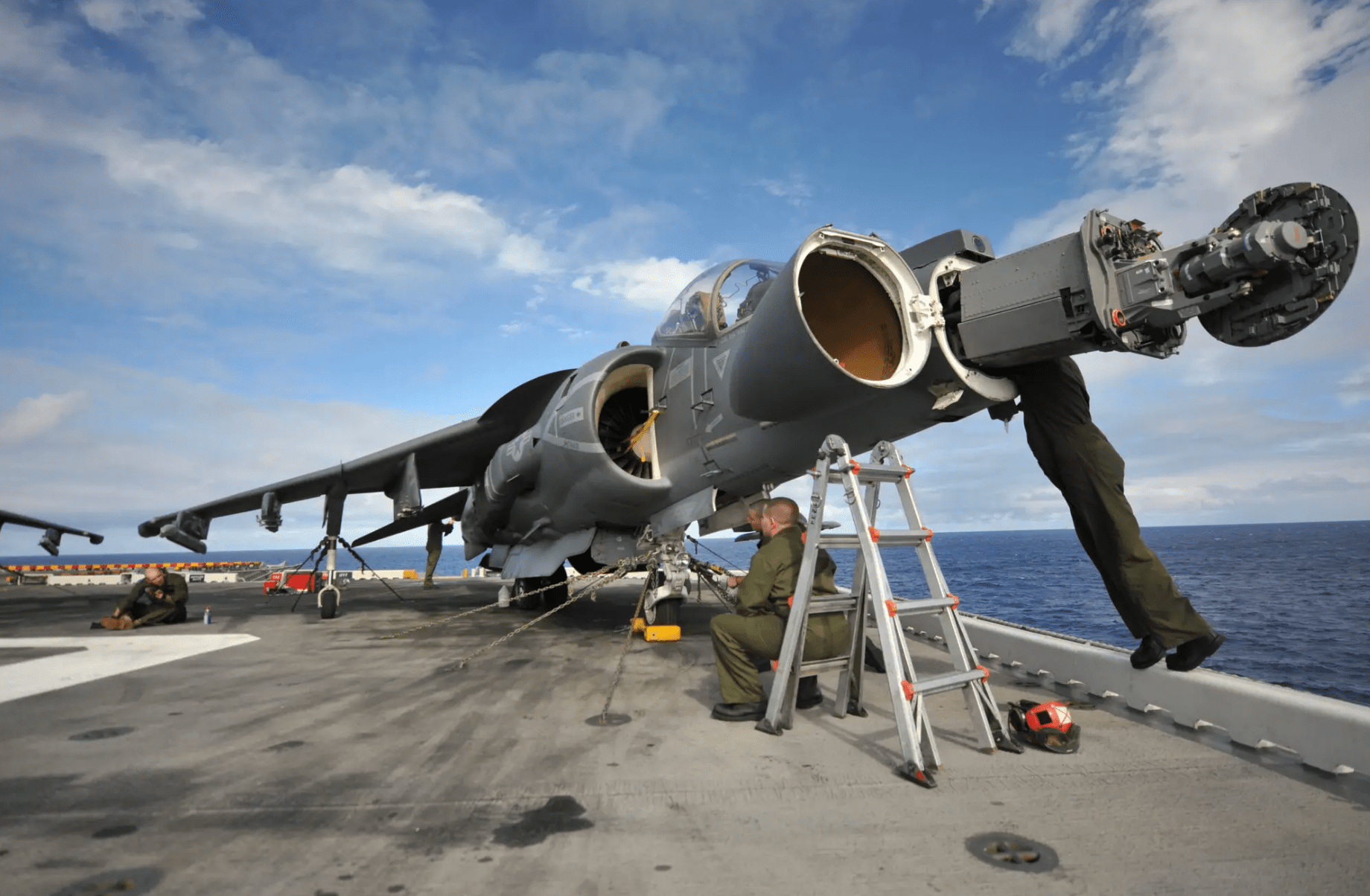
We know from the Royal Saudi Air Force’s experience confronting Houthi drones that the AMRAAM is the preferred weapon.
With a limited thermal signature, the drones can’t always be reliably downed using a Sidewinder. In the past, a former U.S. Air Force F-15 pilot explained to The War Zone that while an AMRAAM is not the only option in this type of engagement “it may be best, depending on the target size and engine type.”
Another former Air Force Eagle pilot added: “By not putting out enough of an infrared signature, you might not get a tone before going inside the minimum range, rendering the AIM-9 useless. Apparently, the drones have enough of a radar signature to enable a target lock before hitting the AMRAAM’s minimum range…”
A Saudi F-15 shoots down a low-flying Houthi drone:

On the other hand, flying over the sea might also make it easier for the Sidewinder’s seeker to acquire a target even with a lower infrared signature.
Gun kills against small aerial targets are generally judged to be tricky to achieve without a good deal of practice and it’s unclear if the pilots involved would have trained for aerial gunnery in any capacity. They can also be dangerous with the possibility of running into such a small target.
One former Harrier pilot told The War Zone: “Guns would be possible but tricky — very tricky — but fun too.”
The unique performance of the AV-8 might also make it an especially useful platform for targeting slower-moving threats. As we have explained in the past, the Harrier’s four thrust-vectoring nozzles, combined with reaction control vanes and augmented aerodynamic control, provide the pilot with some remarkable slow-speed flying qualities that could be useful in engagements with slow-flying drones.
While we don’t know the exact types of drones that were intercepted, the Iranian-designed Shahed-136 that has been used by the Houthis (and by Russia) reportedly has a top speed of only around 115 miles per hour.
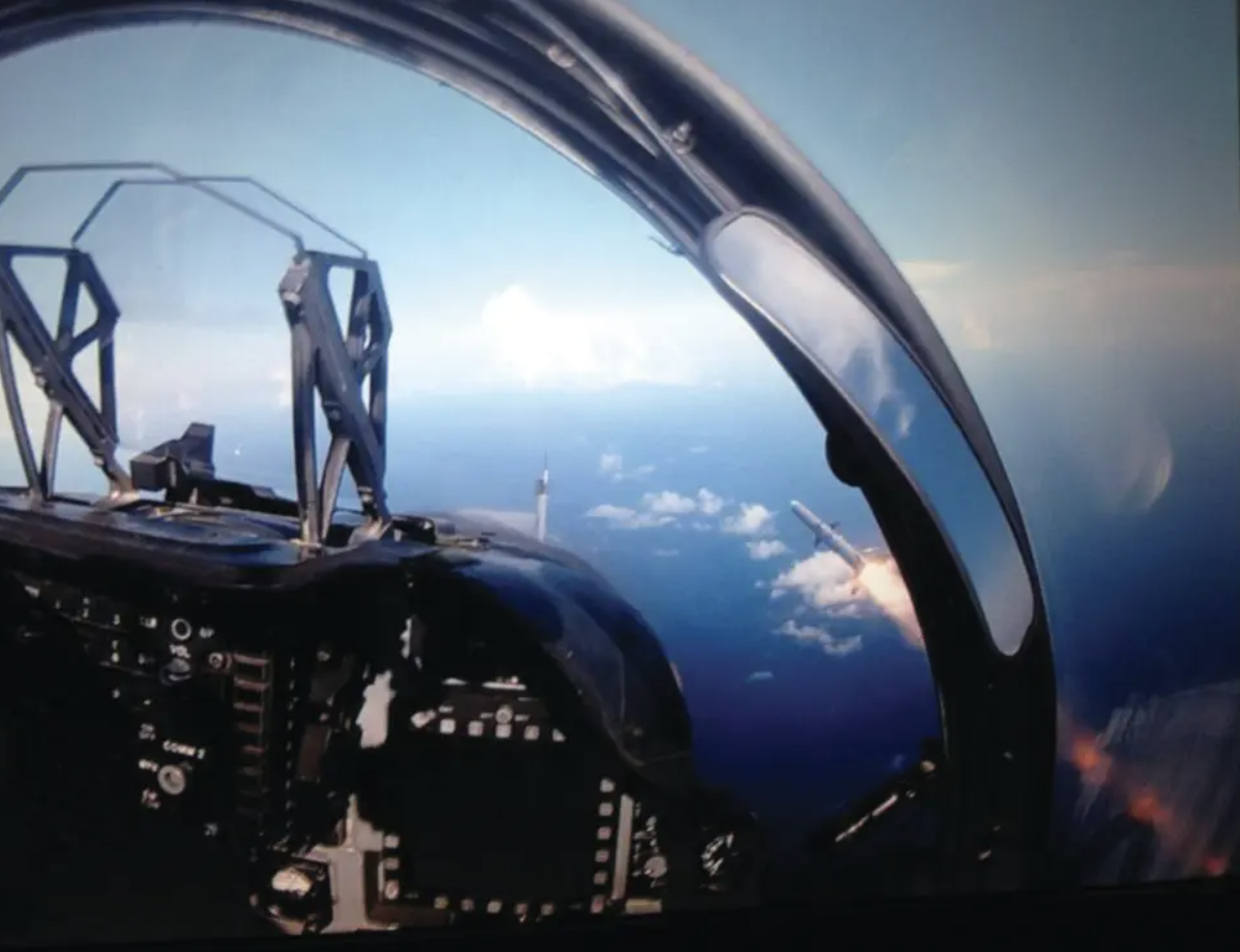
The AV-8 may lack the performance of the Super Hornet, but it is nonetheless able to range far ahead of naval assets and offer them an additional degree of protection or to take off and respond to potential threats. The ability of crewed aircraft to investigate a potential threat is also a significant advantage of the AV-8, over a surface-to-air missile system. This kind of flexibility is especially useful in a complex battlespace like the one found today in the Red Sea.
As well as defending against Houthi threats in the air, the report states that the USS Bataan has also taken part in retaliatory airstrikes, which have targeted militant groups in Iraq and Syria, as well as the Houthis in Yemen.
That would indicate that AV-8s launched from USS Bataan while it was in the Eastern Mediterranean, where it arrived on December 28, via the Suez Canal, to form part of an Amphibious Ready Group (ARG) there.
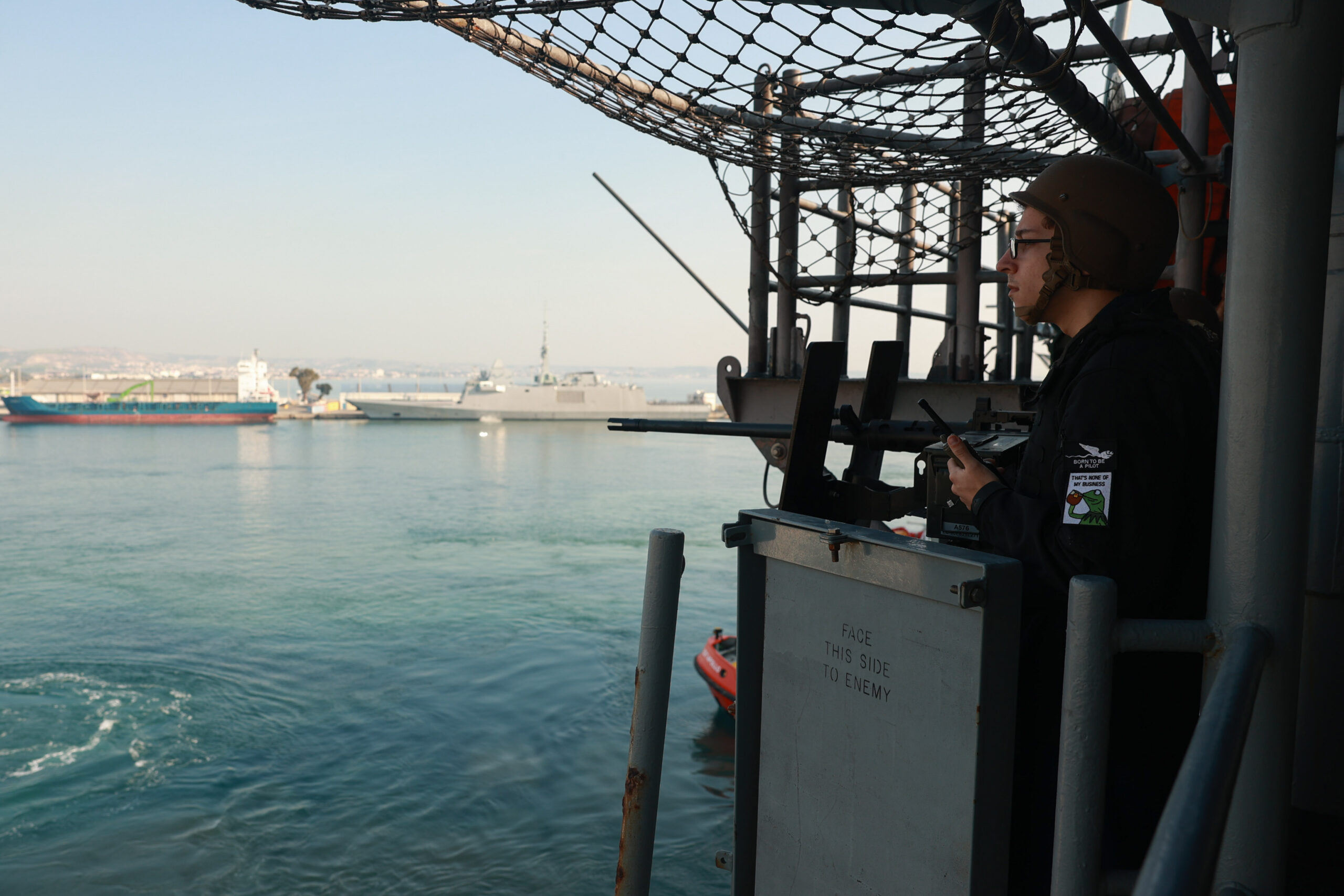
The War Zone has reached out to the Marine Corps for more details about both air-to-air and air-to-ground actions by the AV-8s aboard USS Bataan.
The Harrier is in the twilight of its career with the Marine Corps. It is scheduled to be entirely pulled from service by 2027. We have discussed in great detail in the past how the aircraft’s unique talents, especially in the air-to-air and short takeoff and landing realms, could still be of great use, especially to Taiwan. Upgraded with the AN/APG-79V4 active electronically scanned array (AESA) radar now found on Marine Corps ‘legacy’ Hornets, the Harrier could defend large swathes of airspace from highly austere locations, without relying on huge vulnerable runways. This could also be of great use in the Pacific. But as of now, this won’t be the case.
As far as the shooting down of Houthi drones is concerned, the fighting in the Middle East since October 7 has seen the Israeli Air Force claim victories, as well as the U.S. Navy and, apparently, the Air Force. The Royal Saudi Air Force may well also have racked up further drone kills. Now, it seems that the U.S. Marine Corps might be added to the list.
With few signs that the Houthis are scaling back their attacks on maritime targets, it seems certain there will be the opportunity for further intercepts and subsequent aerial engagements against drones and anti-ship cruise missiles in the region. But for the Harrier, its latest air-to-air application serves as a reminder that the Marines’ ‘jump jet’ will be going out at the top of its game.
UPDATE: While the original BBC report from USS Bataan describes the vessel “sending jets out to try and shoot [Houthi drones] down,” it remains unclear if the seven drone interceptions attributed to Capt. Ehrhart resulted in kills. We have approached the BBC and the Marine Corps for more information, but in the meantime have amended the headline and altered parts of this story to reflect this.
Contact the author: thomas@thewarzone.com
